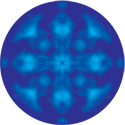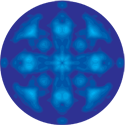How to make CuO sit up straight
The parent compounds of cuprate high-temperature superconductors are typically antiferromagnets where the magnetic interaction between the spins on the copper sites is unusually large ( or ). Since they may play a role in the superconducting mechanism, researchers have explored similarly large magnetic interactions in other copper-oxide compounds.
Moving from left to right on the periodic table, is the last member of the transition metal rock-salt series that includes , , , and . Except for , each of these oxides has a cubic structure, like salt, where the transition metal ion is surrounded by six oxygen ions. From to , the antiferromagnetic (Néel) transition temperature, which scales with the magnetic interaction between the spins on the transition metal sites, increases from to . Following this trend, should have a Néel temperature as high as , but in bulk form, has a low-symmetry, distorted rock-salt structure and a transition temperature of only .
Wolter Siemons and colleagues at the University of Twente in The Netherlands and collaborators at Stanford University in the US report in Physical Review B that they have succeeded in using pulsed laser deposition to grow thin films of with a structure that is an elongated (tetragonal) version of its rock-salt cousins.
While Siemons et al. have determined the structure with extensive crystallography, magnetic measurements will be necessary to determine if the magnetic interactions in this tetragonal form of compare with those of the high-temperature superconducting oxides. – Jessica Thomas





